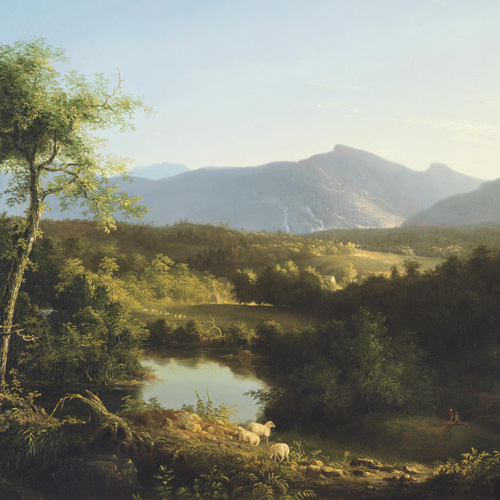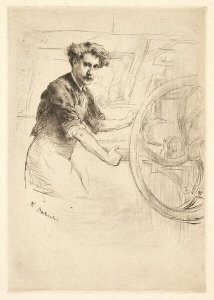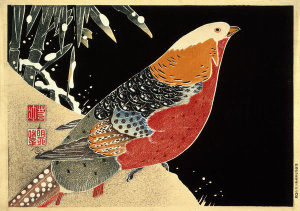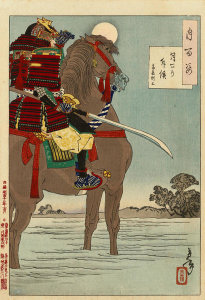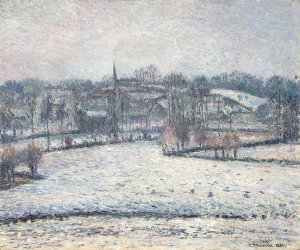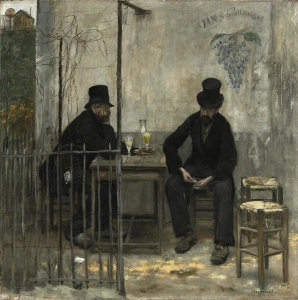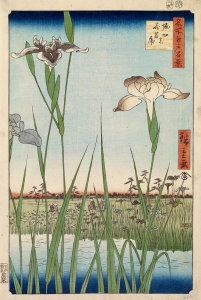About the Artwork
Marie-Guillemine Benoist, Psyche Bidding Her Family Farewell, 1791
Oil on canvas, 43 3/4 x 57 1/8 in. (111 x 145 cm). Fine Arts Museums of San Francisco, Museum purchase, John A. and Cynthia Fry Gunn; Phoebe Cowles and Robert Girard; Margaret and William R. Hearst III; Diane B. Wilsey; Barbara A. Wolfe; The Jay and Clara McEvoy Trust; The Michael Taylor Trust; The Margaret Oakes Endowment Income Fund; The Harris Family; Ariane and Lionel Sauvage; and an anonymous donor, 2022.2
On a rocky shore, beneath a stormy sky, the princess Psyche, dressed in white, gives her mother one last embrace. Tears glisten on their cheeks, and Psyche’s father bows his head in woe, while her sisters seek each other’s comfort. For in this scene, Psyche is effectively being put to death, left behind on a desolate rock to meet her bridegroom—no mortal man, according to a prophesy the king has just received, but a monster capable of laying waste to the whole realm. Drawn from the second-century Roman writer Apuleius, by way of the eighteenth-century French poet Charles Demoustier, this episode from the story of Psyche is one of personal and familial sacrifice for the safety of the kingdom and the public good. Such a theme could not have been more timely in Paris, in the revolutionary year of 1791, when Marie Guillemine Benoist originally exhibited this picture, becoming the very first woman to show a history painting at the Paris Salon. According to the Royal Academy, whose members had, until that year, been the only artists allowed to exhibit at the Salon, women might paint still lifes or portraits, genres regarded as essentially imitative and therefore intellectually inferior, but history painting was the preserve of men—a genre intended to commemorate heroic deeds and showcase the artist’s powers of invention. In 1791, though, the Revolution had thrown open the doors of the Salon to artists unaffiliated with the Academy, and Benoist wanted in. She saw herself as a history painter. Having received her early training in the studio of Elisabeth-Louise Vigée-Lebrun, a wildly successful portraitist and rare female member of the Royal Academy, Benoist seized the opportunity, when Vigée closed her studio, to study with Jacques-Louis David, the greatest history painter of the age and the teacher of a whole generation of Neoclassical artists, including Girodet, Gérard, Gros, and Ingres. Benoist was one of just three female pupils ever enrolled in David’s studio. She quickly adopted her teacher’s tight, hard facture and taste for classical antiquity. She only exhibited a tiny handful of history paintings at the Salon, however: three ambitious canvases in 1791 and two further pictures in 1795. In addition to the extreme rarity of Benoist’s work, what makes her portrayal of Psyche’s farewell to her family extraordinary is the way that her contemporaries treated the Psyche myth. Gérard, David--perhaps most famously--the sculptor Antonio Canova all portrayed later episodes from the same story. Rescued from her desolate rock by Zephyr, Psyche is left in a meadow, where she is discovered by Cupid, the winged god of desire, who falls in love and woos her incognito. The erotic possibilities of these later episodes in the story—offering an excuse to portray two graceful, ephebic nudes—proved irresistible to male artists of the period, and so it’s particularly interesting that Benoist chose an earlier, more obscure chapter, fraught with family drama and female sacrifice, as the subject for her painting. Rich in social and art-historical resonances, Psyche Bidding Her Family Farewell offers a glimpse of Benoist’s ambitions and a sense of the utopian possibilities that the French Revolution promised—but would not quite deliver—for female artists.
-- Emily A. Beeny






